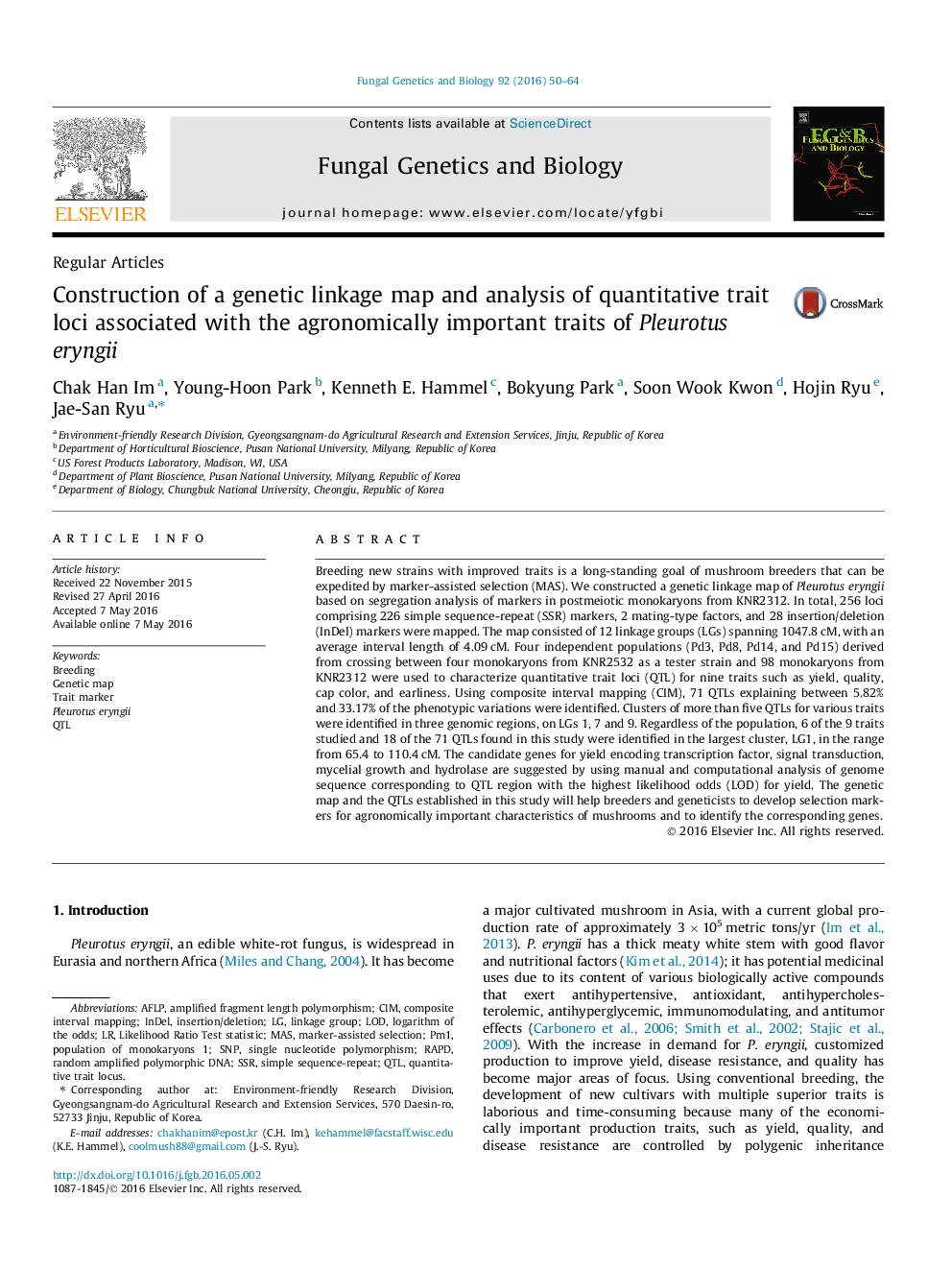| کد مقاله | کد نشریه | سال انتشار | مقاله انگلیسی | نسخه تمام متن |
|---|---|---|---|---|
| 2180664 | 1549999 | 2016 | 15 صفحه PDF | دانلود رایگان |

• Twelve linkage groups were proposed as a Pleurotus eryngii genetic map.
• QTLs responsible for yield and quality were clustered in the restricted regions.
• Yield and cap color QTLs explained 52.3% and 44.9% of variances.
• Candidate genes for yield include transcription factor and various enzymes.
Breeding new strains with improved traits is a long-standing goal of mushroom breeders that can be expedited by marker-assisted selection (MAS). We constructed a genetic linkage map of Pleurotus eryngii based on segregation analysis of markers in postmeiotic monokaryons from KNR2312. In total, 256 loci comprising 226 simple sequence-repeat (SSR) markers, 2 mating-type factors, and 28 insertion/deletion (InDel) markers were mapped. The map consisted of 12 linkage groups (LGs) spanning 1047.8 cM, with an average interval length of 4.09 cM. Four independent populations (Pd3, Pd8, Pd14, and Pd15) derived from crossing between four monokaryons from KNR2532 as a tester strain and 98 monokaryons from KNR2312 were used to characterize quantitative trait loci (QTL) for nine traits such as yield, quality, cap color, and earliness. Using composite interval mapping (CIM), 71 QTLs explaining between 5.82% and 33.17% of the phenotypic variations were identified. Clusters of more than five QTLs for various traits were identified in three genomic regions, on LGs 1, 7 and 9. Regardless of the population, 6 of the 9 traits studied and 18 of the 71 QTLs found in this study were identified in the largest cluster, LG1, in the range from 65.4 to 110.4 cM. The candidate genes for yield encoding transcription factor, signal transduction, mycelial growth and hydrolase are suggested by using manual and computational analysis of genome sequence corresponding to QTL region with the highest likelihood odds (LOD) for yield. The genetic map and the QTLs established in this study will help breeders and geneticists to develop selection markers for agronomically important characteristics of mushrooms and to identify the corresponding genes.
Journal: Fungal Genetics and Biology - Volume 92, July 2016, Pages 50–64